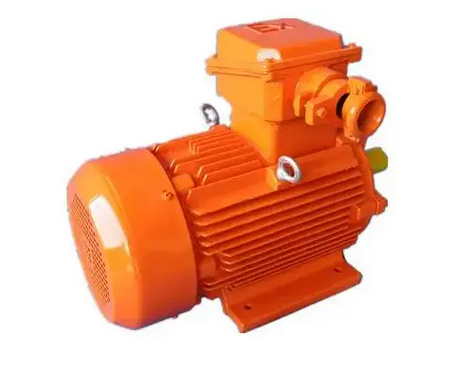The difference between explosion-proof motors and ordinary motors
There are significant differences between explosion-proof motors and ordinary motors in many aspects. These differences are mainly reflected in the application environment, structural design, protection level, manufacturing process and performance characteristics. The following is a detailed analysis of the difference between the two:
1. Application environment
Explosion-proof motors: Mainly used in flammable and explosive occasions, such as coal mines, oil and gas, petrochemicals, coal chemical industry, textiles, metallurgy, city gas, transportation, grain and oil processing, papermaking, medicine and other departments. These environments have extremely high safety requirements for motors to prevent the electric sparks or high temperatures generated by the motors during operation from causing explosions.
Ordinary motors: They are widely used in various non-flammable and explosive occasions, such as machine tools, pumps, electric vehicles and other high-power and high-speed applications.
2. Structural design
Explosion-proof motors: Their structural design is more complex to ensure safety when operating in flammable and explosive environments. For example, the terminal box of the explosion-proof motor has better sealing performance to prevent flammable gas or dust from entering the motor. In addition, the casing of the explosion-proof motor is usually made of special materials that can withstand a certain explosion pressure without being destroyed.
Ordinary motor: The structural design is relatively simple, and the main focus is on the performance parameters and efficiency of the motor to meet the use requirements under different working conditions.
3. Protection level
Explosion-proof motor: The protection level is usually high, with a minimum requirement of IP55 to ensure that the motor can still operate normally in harsh environments and prevent external substances from entering the motor.
Ordinary motor: The protection level depends on the specific application scenario. Common ones are IP23, IP44, IP54, etc. Different levels correspond to different protection capabilities.
4. Manufacturing process
Explosion-proof motor: The manufacturing process is more rigorous and complex, and special materials and processes are required to ensure the explosion-proof performance of the motor. For example, a flameproof structure or increased safety design may be used inside the motor to prevent the generation and spread of electric sparks or high temperatures.
Ordinary motor: The manufacturing process is relatively simple, and the main focus is on the performance and cost of the motor.
5. Performance characteristics
Explosion-proof motor: Under normal operating conditions, it can reliably prevent dust and flammable gases from entering the motor, thereby avoiding short-circuit accidents or fire and explosion accidents caused by faults. At the same time, explosion-proof motors have low requirements for environmental conditions and can be used in various harsh environments.
Ordinary motors: mainly focus on the motor's efficiency, power density, rated torque and other performance parameters to meet the usage requirements under different working conditions.





